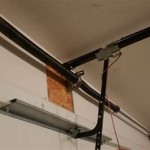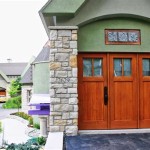Adding a Garage to a House: A Comprehensive Guide
Adding a garage to an existing house is a significant home improvement project that can substantially increase property value and enhance overall functionality. It provides secure parking, valuable storage space, and potentially a workshop area. However, it's a complex undertaking that requires careful planning, adherence to building codes, and a realistic understanding of associated costs and timelines. This article provides a detailed overview of the key considerations involved in adding a garage to a house.
Planning and Design Considerations
The initial stage of adding a garage is crucial and involves thorough planning and design. This encompasses assessing the property, defining the garage's purpose, and selecting the appropriate design to complement the existing house. This stage will also involve developing a detailed budget and establishing a timeline.
First and foremost, a comprehensive site assessment is necessary. This evaluation should consider the property's size, shape, topography, and existing structures. The location of utility lines, easements, and setbacks must be identified to ensure compliance with local regulations and prevent potential conflicts during construction. Soil conditions should also be assessed, as they can significantly impact the type of foundation required and the overall cost of the project. If the soil is unstable, additional measures such as soil compaction or the use of pilings may be necessary.
Defining the purpose of the garage is equally important. Will it be primarily used for parking vehicles, or will it also serve as a workshop, storage area, or even a recreational space? The intended use will influence the size, layout, and features of the garage. For example, if a workshop is planned, adequate lighting, electrical outlets, and ventilation will be required. If the garage will be used for storage, shelving, cabinets, or other organizational systems should be incorporated into the design.
Choosing the right garage design is critical for both aesthetic and functional reasons. The design should complement the architectural style of the existing house and blend seamlessly with the surrounding landscape. Consider the roofline, materials, and exterior finishes to ensure a cohesive look. There are several garage design options to choose from, including attached garages, detached garages, and carport conversions. Attached garages offer the convenience of direct access to the house, while detached garages provide more privacy and flexibility in terms of location. Carport conversions can be a cost-effective option if an existing carport is already in place.
Budgeting is a crucial aspect of the planning phase. It is essential to develop a realistic budget that accounts for all potential costs, including design fees, permits, materials, labor, and unforeseen expenses. Obtain multiple quotes from contractors and suppliers to ensure competitive pricing. It is also advisable to set aside a contingency fund to cover unexpected costs that may arise during construction. Common unexpected costs can include unforeseen issues with the existing foundation, additional utility relocations, or delays caused by weather.
Establishing a realistic timeline is vital for managing expectations and minimizing disruptions. The timeline should include all phases of the project, from planning and design to construction and finishing. Factors that can affect the timeline include the complexity of the design, the availability of contractors, and weather conditions. Obtain a detailed timeline from the contractor and regularly monitor progress to ensure that the project stays on track. Consider potential delays due to permitting processes and material lead times when creating the timeline.
Navigating Permits and Regulations
Obtaining the necessary permits and complying with local building codes are essential steps in adding a garage to a house. Failure to do so can result in fines, delays, and even the potential for forced demolition of the unpermitted structure. Understanding the specific requirements in the relevant jurisdiction is paramount.
The permitting process typically begins with submitting a detailed set of plans to the local building department. These plans should include site plans, floor plans, elevation drawings, and structural details. The plans must demonstrate compliance with all applicable building codes, including zoning regulations, setbacks, height restrictions, and fire safety standards. Depending on the complexity of the project, the building department may also require the plans to be reviewed by a structural engineer or other qualified professional.
Zoning regulations often dictate the size, location, and type of structures that can be built on a property. Setbacks, for example, specify the minimum distance that a structure must be from property lines, roads, and other buildings. Height restrictions limit the maximum height of the structure. Zoning regulations may also address issues such as parking requirements, landscaping, and stormwater management.
Building codes are designed to ensure the safety and structural integrity of buildings. They cover a wide range of topics, including foundation requirements, framing standards, electrical wiring, plumbing systems, and fire safety measures. Compliance with building codes is essential to protect the health and safety of occupants and prevent property damage. Building codes are often based on nationally recognized standards, such as the International Building Code (IBC) and the International Residential Code (IRC), but local jurisdictions may adopt their own amendments or variations.
The permit application process can be time-consuming, so it is advisable to start early. Contact the local building department to obtain a list of required documents and procedures. Be prepared to pay permit fees, which can vary depending on the size and complexity of the project. Once the permit application is submitted, the building department will review the plans and conduct inspections at various stages of construction to ensure compliance with building codes. It is crucial to cooperate with building inspectors and address any concerns they may have in a timely manner.
In addition to building permits, other permits may be required, such as electrical permits, plumbing permits, and mechanical permits. These permits are typically required for any work that involves altering or installing electrical wiring, plumbing systems, or heating and cooling equipment. It is the responsibility of the homeowner or contractor to obtain these permits and ensure that the work is performed by licensed professionals.
Construction and Material Selection
The construction phase involves translating the approved plans into a physical structure. This phase demands careful coordination, quality workmanship, and the selection of appropriate materials to ensure the garage is structurally sound, aesthetically pleasing, and durable. Employing a qualified contractor is highly recommended to oversee the construction process.
Before construction begins, it is essential to prepare the site. This may involve clearing vegetation, removing debris, and grading the land. Excavation will be necessary to pour the foundation. The type of foundation will depend on the soil conditions, the design of the garage, and local building codes. Common foundation types include concrete slabs, perimeter foundations, and pier foundations. A concrete slab is a flat, reinforced concrete surface that serves as both the foundation and the floor of the garage. Perimeter foundations consist of concrete walls that extend below the frost line to provide support for the structure. Pier foundations use concrete piers to support the structure above ground level.
Framing is the process of constructing the skeletal structure of the garage using lumber or steel. The framing must be strong and durable to withstand wind loads, snow loads, and other environmental factors. Common framing methods include stick framing and pre-engineered framing. Stick framing involves cutting and assembling individual pieces of lumber on site. Pre-engineered framing uses prefabricated components that are assembled on site. Steel framing offers superior strength and durability but is typically more expensive than lumber.
Roofing is a critical component of the garage, as it provides protection from the elements. The choice of roofing materials will depend on the architectural style of the house, the climate, and the budget. Common roofing materials include asphalt shingles, metal roofing, and tile roofing. Asphalt shingles are a cost-effective and versatile option that is available in a wide range of colors and styles. Metal roofing is durable, long-lasting, and energy-efficient. Tile roofing is a traditional option that provides a distinctive look and excellent weather resistance.
Exterior siding protects the garage from the elements and enhances its aesthetic appeal. There are many siding options to choose from, including wood siding, vinyl siding, fiber cement siding, and brick veneer. Wood siding offers a natural look but requires regular maintenance. Vinyl siding is a low-maintenance option that is available in a variety of colors and styles. Fiber cement siding is durable, fire-resistant, and resistant to pests. Brick veneer provides a classic look and excellent insulation.
Selecting the right materials is crucial for ensuring the longevity and performance of the garage. Consider factors such as durability, weather resistance, maintenance requirements, and cost when making material selections. Choose high-quality materials that are appropriate for the climate and the intended use of the garage.
Proper insulation is essential for maintaining a comfortable temperature inside the garage and reducing energy costs. Insulate the walls, roof, and floor to minimize heat loss in the winter and heat gain in the summer. Common insulation materials include fiberglass batts, cellulose insulation, and spray foam insulation. Fiberglass batts are a cost-effective option that is easy to install. Cellulose insulation is made from recycled paper and provides good thermal and acoustic insulation. Spray foam insulation provides excellent air sealing and insulation but is more expensive than other options.

How To Add A Garage Addition Ideas

What To Consider Before Planning A Garage Addition T G Builders

Garage Additions For Any Home The House Designers

Adding A Garage To Existing House Complete 2024 Guide

Garage Addition Costs A Comprehensive Guide

3 Things You Need To Know When Planning A Garage Addition

Garages Pettinato Construction Inc Gulf Breeze Fl

What To Consider When Adding An Attached Or Separate Garage At Home

Garage Ideas For Small Lots Danley S Garages

What Is The Good Time To Add A Steel Garage Your Home








